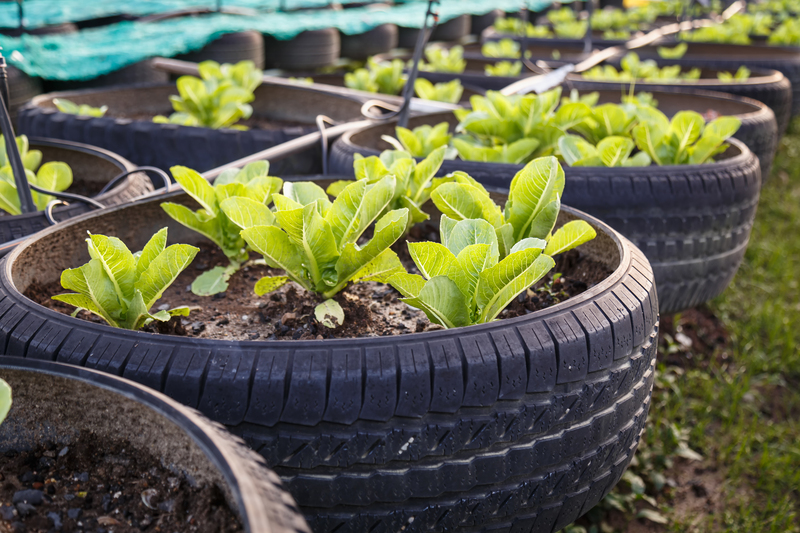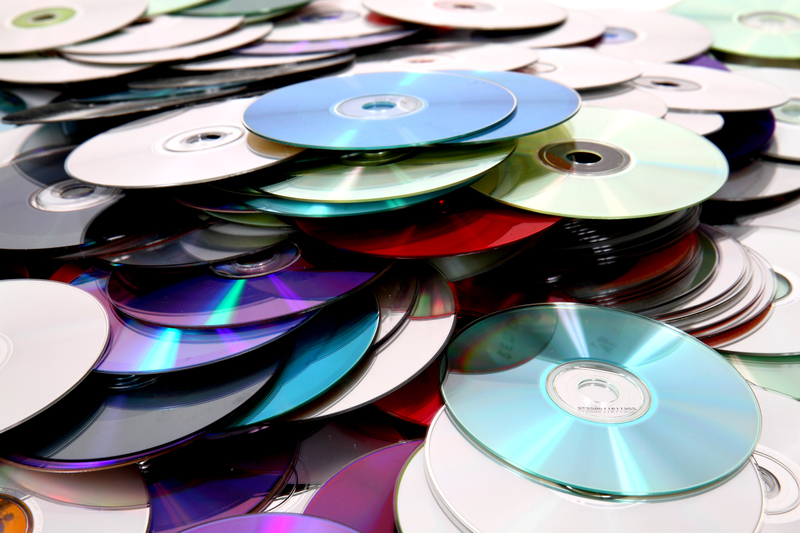Green Creativity: Breathe New Purpose Into Unwanted Materials
In today's environmentally conscious era, green creativity has emerged as both a lifestyle and a necessity. Through innovative recycling and upcycling methods, what many view as waste can become valuable, beautiful, or useful creations. Embracing green creativity not only helps the planet but also unleashes limitless imagination in transforming unwanted materials into superb new items.
Understanding Green Creativity
Green creativity goes beyond basic recycling. It's the imaginative process of rethinking, reimagining, and remaking discarded or unused materials into something of higher value or new function. As sustainability becomes more critical, creative recycling and upcycling ideas offer exciting ways to breathe life into old items while reducing our environmental impact.
What Is Green Creativity?
Green creativity is the art of turning trash into treasure. Whether by restoring, repurposing, or combining materials, it's about:
- Reducing waste
- Saving resources
- Encouraging innovation
- Supporting sustainability
The Urgency of Reusing Unwanted Materials
Every year, millions of tonnes of materials like plastic, fabric, wood, and metal are discarded and end up in landfills. Green creativity transforms these "unwanted" materials into functional, aesthetic, and unique products--benefiting the individual and the environment.

Why Green Creativity Matters
The world is awash with excess goods and packaging. When these are simply thrown away, they contribute to pollution and climate change. Repurposing unwanted materials not only diverts waste from landfills but also:
- Reduces carbon footprint
- Conserves raw resources
- Sparks community engagement
- Promotes ethical consumerism
- Enhances individual creativity
This holistic shift towards using unwanted materials creatively is a powerful way to protect the environment while fostering personal and communal growth.
Types of Materials Ripe for Creative Reuse
Virtually anything can be repurposed with a touch of imagination and ingenuity. Common unwanted materials perfect for upcycling include:
- Plastic bottles and containers: These can become planters, lamp shades, or even art installations.
- Cardboard and paper: Think sculptural art, organizers, and even furniture.
- Textiles and clothing: Old shirts, jeans, and linens are often upcycled into quilts, bags, or cleaning rags.
- Wood scraps and pallets: Pallets, branches, and off-cuts are prized for building furniture, garden beds, and decor.
- Metal cans and jars: These can become lanterns, holders, or unique planters.
- E-waste: Outdated electronics can be disassembled for art projects or used in educational settings.
Unusual Materials to Reimagine
- Old tires transformed into swings or garden seats
- Broken ceramics for mosaic art
- Wine corks into coasters or bulletin boards
- PET packaging turned into purses or waterproof covers
Top Green Creativity Projects to Inspire You
Ready to breathe new purpose into unwanted materials? Here are some of the most popular and inspiring green creativity projects you can try at home, in the classroom, or your local community.
1. Upcycled Planters from Bottles and Cans
Empty bottles and cans are ubiquitous. Instead of tossing them, convert them into quirky, unique planters for herbs, flowers, or succulents. Simply cut, paint, and add drainage holes--creativity is your only limit! This project not only reduces plastic waste but brings greenery into your living space.
2. Pallet and Scrap Wood Furniture
Old wooden pallets and scraps can be transformed into beautiful, rustic furniture such as coffee tables, bookshelves, beds, or garden benches. With some basic tools and a vision, your next favorite furniture piece can be made almost entirely from unwanted wood.
3. Textile and Clothing Transformations
Fashion trends come and go, but fabric waste lasts. Reimagine old T-shirts into braided rugs, patchwork throws, tote bags, or even dog toys. With a needle and thread, breathe new life into worn-out garments and cut down textile waste.
4. Carton Creations
Milk and juice cartons are surprisingly sturdy and waterproof, making them ideal for organizing drawers, protecting small valuables, or starting seedlings. Decorate with washi tape or leftover paint for an artistic touch.
5. E-Waste Art and Gadgets
Outdated electronics, circuit boards, and wires need never meet the landfill. Ingenious creators sculpt robots, wall art, and jewelry from old electronics. Educators and hobbyists likewise extract components for teaching STEM concepts.
6. Upcycled Glass and Jars
Glass jars and bottles shouldn't clutter recycling bins. Paint them, fill with fairy lights, or use as vases, lanterns, or storage containers. Transform glass waste into timeless, elegant home decor.
Creative Techniques for Green Upcycling
Success in green creativity often calls for a mix of practical techniques and inspiration:
- Painting and Decorating: Fresh paint, decoupage, or stenciling can instantly uplift the look of almost any object.
- Cutting and Assembling: With saws, glue, and screws, multiple materials may be creatively combined.
- Sewing and Stitching: Old fabrics can be combined to make new clothing, rugs, or accessories.
- Melting and Molding: Some plastics and metals can be melted down and poured into new forms or molds.
- Structural Reinforcement: Adding supports and coatings allows fragile materials new functions and longer life.
Tips for Getting Started with Green Creativity
- Start Small: Beginners should choose easy projects like tin can planters or T-shirt tote bags before tackling furniture.
- Collect Materials: Set aside clean, usable items from your home, and invite friends or neighbors to contribute.
- Seek Inspiration: Explore DIY blogs, Pinterest, or local upcycling workshops for ideas.
- Safety First: Use protective gear, especially when cutting, sanding, or painting unwanted materials.
- Mix and Match: Combine different materials for unique, hybrid creations--think pallets and jars or fabric and wire.
- Share Your Work: Inspire others by posting photos, holding community workshops, or giving your creations as gifts.
Sustainability and the Circular Economy
The concept of green creativity fits perfectly within the circular economy model, prioritizing:
- Reuse before recycle or dispose
- Designing out waste
- Extending the lifespan of products and materials
- Sharing and community-driven collaboration
By breathing new purpose into unwanted materials, you become part of a global movement to transform waste streams into creative assets, advancing both local economies and the health of the planet.
Green Creativity in Business & Community
Green creativity isn't just for hobbyists. Many businesses and non-profits now focus on upcycling and creative reuse. Artisans build entire product ranges from salvaged materials; community centers hold upcycling workshops; eco-friendly brands use recycled content in packaging and goods.
- Green entrepreneurs: Launching products made from recycled bike tubes, reclaimed timber, or discarded fabrics.
- Schools: Integrating creative reuse into curriculum to teach sustainability and problem-solving.
- City governments: Hosting repair cafes and swap events to keep materials in use.
Barriers and How to Overcome Them
Despite its appeal, green creativity can face obstacles such as:
- Lack of tools or workspace
- Limited access to unwanted materials
- Knowledge gaps in upcycling techniques
- Concerns about safety or durability
Solutions include: community tool libraries, organizing material swap days, online tutorials, and collective workshops. The internet offers countless resources and local organizations can bring makers together.
Green Creativity in Everyday Life
You don't need to be an artist or a craftsman to infuse green creativity into your routine! Here's how to embed sustainable habits in daily life:
- Carry a reusable, upcycled tote bag
- Use glass jars from food products to store leftovers
- Repurpose cardboard boxes as drawer dividers
- Turn worn jeans into garden aprons or tool pouches
- Gift upcycled creations to friends and family
- Volunteer at a creative reuse center
With every project, you create a ripple effect, inspiring others to see potential where others see waste.
Green Creativity for Kids
Engaging children in upcycling and creative reuse benefits their cognitive and emotional development. Encourage kids to:
- Make robots from boxes and bottle caps
- Create costumes from old fabrics
- Build birdhouses from cartons
- Experiment with recycled art competitions
These activities foster environmental ownership, self-expression, and critical thinking skills from a young age.
Showcasing Green Creativity: Real-World Examples
Around the world, individuals and organizations are making waves through ambitious green creativity projects. Highlights include:
- Ocean Sole (Kenya): Repurposes discarded flip-flops from waterways into stunning animal sculptures, cleaning beaches and supporting employment.
- TerraCycle (Global): Partners with corporations and consumers to recycle "non-recyclable" items and transforms them into playgrounds, benches, and more.
- Eric Randall (United States): An artist who creates oversized fish sculptures from old plastic bottles, raising awareness of marine pollution.
- REstart Project (UK): Community events focused on repairing and repurposing old electronics, reducing e-waste.
These projects prove green creativity can scale from home DIYs to planet-wide initiatives--fueling a sustainable future for all.

How to Start Your Green Creativity Journey
Step-by-Step Guide:
- Audit your waste - What do you throw out most often? Focus your creative efforts here.
- Gather tools and safe space - Simple items like scissors, glue, paints, and a clean workspace are often all you need.
- Collect inspiration - Browse online for upcycling ideas that match your skills and home decor.
- Try your first project - Start with something small and manageable.
- Show and share - Display your creations, share on social media, join community groups to swap ideas and materials.
- Expand with experience - As you build confidence, tackle more ambitious projects, or collaborate with others.
Conclusion: The Future of Green Creativity
As awareness grows, green creativity is at the forefront of a new wave of sustainable living. It blends environmental duty, cost saving, and artistry, turning discarded materials into the stars of our homes, workshops, and urban landscapes. Whether you make a planter from a plastic bottle, refurbish old furniture, or join a creative reuse group, your efforts truly make a difference.
Breathe new purpose into unwanted materials through your own green creativity--and be part of the global movement for a cleaner, more imaginative world.
Frequently Asked Questions about Green Creativity
- Can anyone practice green creativity?
Absolutely! From kids to adults, all that's required is a willingness to experiment and learn. - Do I need expensive tools?
No. Most upcycling and creative reuse projects use basic tools and household items. - How do I find materials to repurpose?
Start with your own home, then connect with friends, family, or local recycling centers for more supplies. - Where can I learn new techniques?
Look for blogs, YouTube tutorials, community workshops, or creative reuse centers in your city.
The possibilities are truly endless when creativity meets green thinking. Start small, dream big, and transform our world--one unwanted item at a time!
